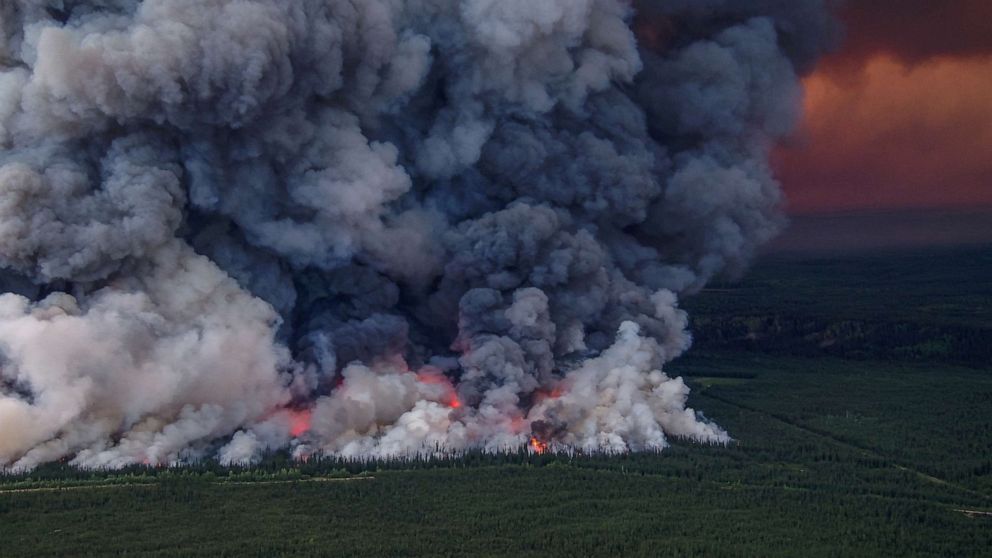


Wildfires burning in Canada have prompted hazardous air pollution conditions in the U.S. this week, as smoke moves South and lingers over much of the Northeast.
While wildfires in California and other western states have prompted air quality warnings in the past, seeing them on the other side of the country has prompted questions about how much of a role climate change is playing in the event.
MORE: Wildfires in eastern Canada affecting air quality in major US citiesHere's a breakdown of what we know about the connection between the wildfires in Canada and air quality.
Why is Canada's wildfire season so bad this year?
Canada has had an epic and especially early start to the wildfire season with more than 1400% of the normal amount of acres burned for this time of the year.
More than 8.7 million acres have burned in Canada in 2023, an area larger than the state of Vermont. In an average fire season for Canada, closer to 6.2 million acres will burn due to wildfires.
For about a month, the U.S. and Canada have been in a barely moving blocking pattern called an omega block — it has broken down a few times, but briefly.
This has allowed persistent heat for Central Canada and The Great Lakes — and short surges of record heat for eastern Canada around Montréal and Nova Scotia.
What's the connection between climate change and wildfires?
Wildfires are not caused by climate change, they are part of Earth's natural cycles and are increasingly started by humans either intentionally or accidentally.
According to the National Park Service 85% of wildfires in the United States are started by humans, sometimes these are intentional but most often by accident. Canada says about half of their fires this year have been started by humans.
However. the conditions that make wildfires more intense and severe, including heat and drought, are strongly linked to human-induced changes in the climate.
Canada's natural resources agency says climate change could potentially double the amount of area burned by the end of this century with potential economic consequences like lack of timber supply and changes in which tree species make up the majority of forests.
Damaged trees, dead trees, brush in the forests attributed to drought or invasive insects can also increase the amount of fuel for forest fires.
What do we know about climate change and air pollution?
The wildfires in Canada have prompted air quality alerts for the Northeastern U.S. and other parts of the country this week.
Climate change is expected to worsen air pollution conditions due to changes in rainfall and weather patterns that can increase the amount of pollutants like ozone or particulate matter like smoke that linger near the ground.
There is preliminary research that shows rising global temperatures can affect the jet stream’s flow making it weaker and therefore allowing air to sit stagnant for longer.
The jetstream exists, because there is a large difference in temperature between the poles and the equator. The jet is stronger in the northern hemisphere in winter because the temperature gradient is bigger. In summer, the jet is weaker.
MORE: California storms wreak havoc: How an elongated jet stream is driving the deadly weatherToday, we see global temperatures rising overall, but the arctic and poles are warming 2-3 times faster than anywhere else. That means there is less temperature difference and scientists believe this may cause the jet to be weaker in all seasons.
The nonprofit organization Climate Central found that of 241 U.S. cities, 83% have seen an increase in the number of stagnant air days since 1973.
MORE: Toxic smoke from Canadian wildfires could impact health of millions in the USThe Fourth National Climate Assessment published in 2018, found that more than 100 million people in the U.S. live in communities with air pollution above what’s considered healthy, and that climate change and more frequent, severe wildfires will make that air pollution worse.
However, steps to limit global warming like limiting greenhouse gas emissions can mitigate those impacts both by limiting future warming and releasing less pollutants into the air.